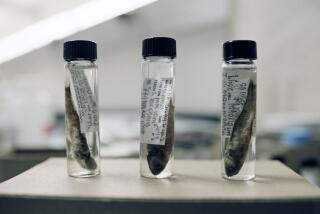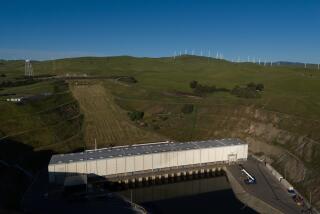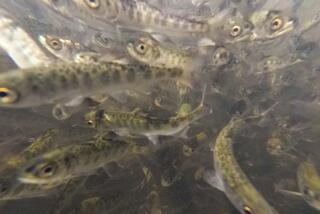Valdez Spill Science Data Stays Slippery : Ph.D.s are about to clash over long-term effect of the tanker disaster. Exxon says there isnât any.
ANCHORAGE â Science, as the scientists say, is a process not a product.
And when it comes to the aftermath of the Exxon Valdez oil spill, the scientific process is as slippery and messy to grasp as North Slope crude.
The question awaiting scientific illumination here in Alaska is this: How much long-term damage has there been, and will there be, to the teeming animal and plant life of Prince William Sound as a result of Americaâs worst oil disaster, now four years past?
So far, science has not been up to the challenge. Itâs not for lack of money or scientists, either. Tens of millions of dollars and hundreds of the best men and women in the business have been at the task.
For all that, the Ph.D.s and their hired public relations vassals are about to clash head-on, showing just how far they remain from consensus about the risks of transporting oil at sea.
Exxon is undertaking a nervy scientific and public relations campaign to say it can prove the March, 1989, grounding of its supertanker and the disgorging of 11 million gallons of crude oil caused no significant long-term damage to the birds, fish and mammals of that beautiful coastal inlet.
In other words, yes, hundreds of thousands of animals died and suffered in the goo and poison immediately after the wreck, and the fishing economy and native subsistence were severely disrupted. But the company says it will demonstrate the remaining damage is isolated âto only a few patches of real estateâ along shorelines and marshes, areas only a few acres in size.
It is a startling claim, coming only eight weeks after federal and state scientists gathered in a symposium to release their studies of the spill and report quite the contrary.
The government scientists found that cleansing action by the storm-tossed seas, the hardy nature of creatures of the region and the $2-billion Exxon cleanup significantly reduced the lasting consequences of the spill. But there were many exceptions reported.
The government says the herring spawn in the region has been the weakest in 25 years. Genetic damage was found in salmon. Disruption of fishing led some salmon populations to explode and now a crash is feared.
Among birds, the murres seem to be hardest hit--with mating cycles disrupted so severely that 100,000 chicks were born too late to survive the winter and were swept to sea. These colonies may never recover, scientists said. Harlequin ducks still suffer. Killer whales, harbor seals and sea otters have failed to fully rebound.
Government scientists acknowledged their conclusions were imperfect, and they worried about what could be happening without them knowing, or what may happen in future generations of animals that are interdependent.
Exxonâs opposite findings are to be released later this month, but the company already is selectively releasing its conclusions via press briefings for newspapers around the nation.
Exxon said it applied sophisticated âfingerprintingâ to oiled tissue samples, eggshells and sea floor sediments collected by the government and found that almost none of the harmful material blamed for lingering damages actually came from the Exxon Valdez.
Rather, three other sources of pollution are to blame: Diesel fuel from fishing boat traffic, naturally occurring oil seeps from as far away as California, and contamination in the laboratories used by the government, Exxon says.
In short, the oil company says the vast data base on which government scientists rely is wholly flawed. For instance, the oil found in sea duck livers is not oil at all but some other unknown contaminate introduced in the laboratory, Exxon says, and oil found in murre eggshells is actually diesel.
âWeâre not disputing the short-term damages. It wasnât pretty here,â said Exxon senior research scientist Hans O. Jahns in a briefing with The Times. But he continued, the government is â100% wrongâ in claiming that oil from the Exxon Valdez is causing widespread damage today.
âThese data have led to this misconception that there is continuing harmful exposure to hydrocarbons, that hydrocarbon exposure continues from the Exxon Valdez. This is not true,â Jahns said.
The government has not seen Exxonâs studies and says it is powerless to respond intelligently. But Robert B. Spies, a Livermore, Calif., contract scientist who is leading the government scientific team, said there is plenty of other evidence of many varieties of life that have suffered since the spill, such as shrunken populations of birds.
âIt sounds like they are way overblowing the implications of this in a deliberate attempt to muddy the waters,â Spies said.
Exxon and the government previously agreed to a controversial $1-billion damage settlement from the spill. Next, the conflicting science from the two sides will be put to the test during the litigation of millions of dollars of pending third-party damage claims.
More to Read
Sign up for Essential California
The most important California stories and recommendations in your inbox every morning.
You may occasionally receive promotional content from the Los Angeles Times.










